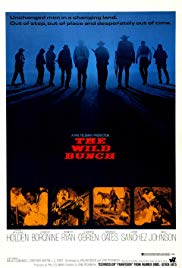 Our favorite contributor, Rusty Ryan, dishes out the good stuff on THE WILD BUNCH 50th Anniversary!
Our favorite contributor, Rusty Ryan, dishes out the good stuff on THE WILD BUNCH 50th Anniversary!
THOUGHTS ON THE WILD BUNCH
by Rusty Ryan
Original premiere date: June 18, 1969
Director: Sam Peckinpah
Screenplay: Walon Green and Sam Peckinpah based on a story by Walon Green and Roy N. Sickner
Composer: Jerry Fielding
Cinematographer: Lucien Ballard
Editor: Lou Lombardo
Starring: William Holden, Ernest Borgnine, Robert Ryan, Edmond O’Brien, Warren Oates, Ben Johnson, Jaime Sánchez, Emilio Fernández, Strother Martin, L. Q. Jones, Albert Dekker, Bo Hopkins, Alfonso Arau, and Dub Taylor
REVIEWER’S NOTE: There will be some general spoilers ahead, but honestly, The Wild Bunch is half a century old. By now, countless people have seen this movie that only gets better with each repeated viewing. Hopefully, adding some technical insights might help seasoned viewers get even more appreciation for this innovative masterwork. Or you might be new to The Wild Bunch and bringing with you a modern movie viewers’ eyes. Our accessibility to filmed entertainment is much easier than it was 50 years ago with home video, cable and the Internet. Techniques used by this movie have been copied for decades and by now are considered commonplace. Hopefully, by adding historical and cultural context, you might find yourself in a place where you can get a sense of the jaw-dropping impact this movie had when it first opened.
THE ORIGINAL RELEASE
In the summer of 1969, Sam Peckinpah’s The Wild Bunch opened to a audiences who were probably expecting the traditional “Good Guy Gets The Bad Guy” Hollywood western. Less than a year earlier, director Author Penn had pushed the envelope of cinematic violence framed by jolting editing techniques with Bonnie and Clyde. But with The Wild Bunch, Peckinpah shredded that envelope. Then for good measure, he soaked it in gasoline and took a blow torch to it. Whether you loathe or relish the romanticized nature of violence in cinema today, The Wild Bunch is ground zero!
As the lights dimmed, theater goers were immediately exposed to an opening scene of children gleefully torturing live insects prior to a robbery gone awry. An ensuing shoot-out decimates the town. Innocent men, women, and children are indiscriminately gunned down in protracted bloody slow motion. People are used as human shields as the robbers attempt to escape. Horses fall, tumble and are pulled through store windows due to the use of off-screen trip wires. Sleazy bounty hunters fight with each other as they frantically tear clothing and other valuables from the blood-soaked dead bodies that adorn the street. And as if to add one final kick in the stomach, children start mimicking what they had just witnessed by pointing fingers at each other and shouting “Bang! Bang!” And that was just the first 15 minutes.
Most of the shell-shocked patrons had never seen anything remotely like the The Wild Bunch. But after the movie had run its full 144 minutes, those who could look past the overwhelming visual assault were left with a complex inner dilemma. Because contrastingly, they had also just witnessed an incredibly innovative cinematic masterpiece of storytelling and editing technique that still influences Filmmakers to this day – 50 years later!
The Wild Bunch is not only one of the best Westerns ever made, it is one of the best American movies ever made.
This film would become Peckinpah’s Mountaintop moment. An incredible amount of outside factors would converge with the Director’s own personal beliefs to help shape his Magnum Opus. Those included: The growing frustration with the Vietnam War; The lack of reality seen in Westerns up to that time; The newly instituted MPAA rating system; A chance to beat a rival Hollywood Studio and release a major Western; The violence previously explored in Bonnie and Clyde; A young film editor willing to break long established rules; A production filmed on location in Mexico and away from Studio oversight; A Producer, who was constantly challenging Peckinpah while also shielding him from studio meddling because of his realization of the film’s importance; and a cast made up of authentic leading men and amazing character actors.
One additional, and previously unthinkable, factor was a large contingent of talented Mexican and Mexican-American technicians and actors that contributed to this movie. A novel concept when you consider that the Western is probably the most American of all story genres. This topic is explored in detail in W. K. Stratton’s new book; THE WILD BUNCH Sam Peckinpah, a Revolution in Hollywood, and the Making of a Legendary Film. [See accompanying book review and interview with author Stratton]
THE STORY
Peckinpah’s saga centers around a small band of aging, ruthless outlaws in 1913 South Texas looking for one last big score. Conflicts abound within and outside the group as they are constantly battling their own mortality, each other, their pursuers, and a West that was rapidly modernizing and leaving them behind. The Bunch includes leader Pike Bishop (William Holden), Dutch (Ernest Borgnine), the Gorch brothers (Warren Oates and Ben Johnson), Sykes (Edmond O’Brien) and newest member Angel (Jamie Sanchez). After the initial robbery attempt, they are forced to cross the border and take refuge in Mexico during the time of the Mexican Revolution. They are followed by a band of bounty hunters that includes a captured former gang member, Deke Thornton (Robert Ryan), who is reluctantly lending his help to avoid more prison time.
The outlaws take refuge in Angel’s village, a town that is being ravaged by General Mapache (Emilio Fernández). Mapache, an officer in the Mexican Federal Army is using the town’s resources to feed his troops as they battle Pancho Villa. The Bunch eventually ends up at Mapache’s Agua Verde military headquarters where Angel sees his former lover with Mapache and shoots her in a moment of anger. Pike defuses the situation and offers to work for the General. They agree to steal a weapons shipment from a U.S. Army train in exchange for a cache of gold coins.
After the train robbery, Angel gives up his share of the gold in return for sending one crate of rifles to a band of rebels from his village. Eventually Mapache learns about the missing a crate and he captures Angel. Outnumbered, the Bunch deals with feelings of helplessness, indifference and guilt as Mapache tortures Angel. After a period of reflection they decide to forcibly persuade Mapache to release Angel setting up one of the most iconic showdowns in movie history.
THE CULTURE OF AMERICA IN 1969
The late 1960’s were a time of incredible social upheaval. Our country and our culture were changing rapidly. Americans were facing issues that included the Vietnam War, racial strife, political assassinations, student protests, increasing drug experimentation, a growing Generation Gap, and the Sexual Revolution.
Movies were not immune to this wave of change and in 1968 the MPAA released a new movie rating system that would allow filmmakers more flexibility to explore these themes. Prior to this, a system created in the 30’s (the Hayes Production Code), placed very strict prohibitions on movie content. It had become increasingly out of touch with evolving sensibilities. A few examples included: married couples could not be shown sharing the same bed and all criminal/immoral acts had to eventually result in the perpetrator being punished accordingly for their sins. The new code laid the groundwork for the rating system we have today. The original MPAA code included the following ratings based on content: G – General audiences, M – Mature content with parental discretion advised, R – Restricted with no one under 16 unless accompanied by adult, and X – No one under 16 admitted.
A new wave of American filmmakers were more than eager to push boundaries afforded by this new code. Previously taboo themes were suddenly fair game. Other releases in 1969 included movies like Easy Rider (Drug Using/Dealing Anti-Hero), Alice’s Restaurant (Hippie/Bohemian Counterculture), Bob and Carol and Ted and Alice (Couple Swapping), Medium Cool (Anti-War themes & Political Unrest), and 100 Rifles (Interracial Coupling). And of course, Midnight Cowboy (Male Street Hustlers) which would eventually become the first and only, X-rated movie to ever get the Academy Award for Best Picture. The decade would close with a final exclamation point of innocence lost, as America was introduced to the crimes of the Manson family. And this July, as if right on cue, Quentin Tarintano will explore this exact transitioning period of American culture culminating with the infamous murder spree in Once Upon A Time In Hollywood.
THE DIRECTOR
Sam Peckinpah was an immensely talented, hard-working, and hard-drinking Hollywood Director. His film credits include an assortment of the immediately iconic (Straw Dogs, The Getaway), as well as the Initially panned, but eventually revered (Major Dundee, The Ballad Of Cable Hogue, Pat Garrett And Billy The Kid). His films generally deal with conflicted men who struggle with honor, morality and loyalty. They were often outsiders or loners. He had the nickname “Bloody Sam” due to the violence in his films which was usually how these outcasts found their resolution/redemption.
Peckinpah’s early Hollywood jobs included screen writing and eventually TV directing. Most were westerns (The Rifleman, The Westerner), which were a big TV staple at that time. His first big directing break came with the Western movie, Ride The High Country. This film gave him deserved acclaim and that success led him to Major Dundee, a big-budget Hollywood production starring Charlton Heston. Production of this film that was plagued with spending excess, poor planning decisions, and a studio that originally cut 12 minutes prior to release without the Director’s consent. Stories of Peckinpah’s behavior on set and the poor box office after release sent him back to television.
His TV show called Noon Wine caught the attention of Producer Phil Feldman, who was interested in having Peckinpah rewrite and direct an adventure film, The Diamond Story for Warner Bros. That suddenly changed when rival studio, 20th Century Fox announced their plans for a new big-budget Western named Butch Cassidy and the Sundance Kid starring Robert Redford and Paul Newman. In response, Warner Brothers quickly shifted course and green lighted a Western of their own to beat the to beat Butch Cassidy to the theaters. In 1967, Peckinpah took an existing story penned by a Hollywood stuntman, William Sickner, and started working on the screenplay of The Wild Bunch.
THE ACTORS
William Holden, Ernest Borgnine, Warren Oates, and Ben Johnson are all spot-on casting choices as the aging bandits. The real man authenticity of their aged appearance combined with their long-honed acting ability convincingly seems like all four have been together for a long time. Eye movements, lip twitching and facial expressions speak in complete and complex sentences between them. But that doesn’t mean that they don’t suddenly regress into fiery outbursts at a moments notice. But given the primitive nature of these men, there is still a genuine bond between them, especially Holden and Borgnine.
Edmond O’Brien is the group’s elder member and is way past his prime. Once an outlaw just like the main four but now reduced to rounding up horses and insulting the other gang members. O’Brien is unrecognizable in his aging makeup complete with tobacco rotted teeth, dirt smudges and mess of overgrown of hair and whiskers. His character’s insight and experience proves valuable to the gang’s leader Pike.
Contrasting Sykes is the youngest member, Angel, played by Jaime Sánchez, an outlaw that still clings to some idealistic views of life. His Mexican heritage does not sit well with the Gorch brothers. Angel knows this and skillfully uses it to prod them to careless outbursts that always get about two breaths away from becoming deadly.
Robert Ryan, another aging Hollywood star, now in the second half of his career skillfully plays a particularly tortured man. In flashbacks, we see that he was captured by the law while Pike got away clean. In prison he is psychically and mentally tortured. His conflicting emotions of admiration and hatred for his former partner are constantly on display throughout his weathered face.
The rest of the cast is populated by a “Who’s-Who” of established 60’s and 70’s character actors including Strother Martin, L.Q. Jones and Dub Taylor. The opening sequence also includes a very memorable performance by Bo Hopkins in his first screen role.
Emilio Fernández, the revered Mexican cinema icon, plays General Mapache. He radiates sleaze with a character that is dangerously unpredictable. A young but very recognizable, Alfonso Arau, is Lieutenant Herrera. He is another Mexican actor with a long career in both Mexico and the USA and is still working today.
Sadly, except for Sanchez, Arau and Hopkins all the actors previously listed here are no longer with us. One of the many benefits of screenings like these is to showcase these performances act as an timeless snapshot preserving and honoring their talents.
THE GROUND-BREAKING CINEMATIC TECHNIQUES
For all its’ accolades in writing, directing, acting, score and cinematography, The Wild Bunch generally gets set-apart for it’s operatic use of graphic violence. Previously, actors getting shot reacted with jerking movements as imaginary bullets hit them (A Fistful of Dollars). Some films added small explosive charges (Squibs) under clothing which would pop open and emit a puff of smoke or a black powder burn (The St. Valentines Day Massacre). Bonnie and Clyde added a small blood pack to the explosive charge so blood would appear to squirt out of the entry wound. That was not enough for Peckinpah who insisted on the extra shock of also showing exit wounds. Then he had the explosives and blood packets made larger and filled with small pieces of raw meat for good measure.
One of the film’s biggest cinematic contributions came from the young imaginative editor, Lou Lombardo. The editor showed Peckinpah an episode of the TV series Felony Squad which he had done in 1967. It included a “slow motion” sequence where Joe Don Baker is shot by the police. The scene was actually filmed at normal speed, (24 frames per second) but then Lombardo triple-printed each frame to extend the screen time creating a faked slow motion when played.
Peckinpah was very impressed and wanted that technique on display in each of the major shootouts. He would achieve this by using multiple cameras, operating at various film rates, including 24, 30, 60, 90, and 120 frames per second. Lombardo would then cut and interchange these frame rates together. The result was sequences that would shift from normal to slow to fast to slower still. It produced a disorienting quality that was both shocking and memorizing at the same time. Bodies became works of art as they slowly contorted in space while being cut to shreds. Peckinpah says this technique was used to show how bad violence really was. If that was truly his goal, it might have actually brought about the opposite result. Now this stylized form of carnage is a constant staple in all forms of filmed entertainment.
The use of many quick edit cuts was also amped-up. Lombardo stayed in Mexico with Peckinpah for three months after shooting to cut the picture. In the late 1960’s, the average movie contained approximately 600 edit cuts. The original release of the The Wild Bunch had 3643 edit cuts. Some almost subliminal as they consisted of only three or four frames. When you consider the entire length of the film, that is a average shot length of three seconds. The final five minute Agua Verde battle consisted of 325 edits. That averages out to each shot being slightly under one second long.
The movie was beautifully photographed by Lucien Ballard in Panavision 70mm. Exterior sweeping shots of the Western vistas were shot in reds, golds and browns. The warm colors amplified the dusty haze of the choking dust that was everywhere. Many interior shots, especially close ups, were contrastingly bleak with very hard black shadows. And Peckinpah was not lacking in raw film from which to pick. Ballard shot 330,000 feet of film. That was 50% more than was budgeted for.
The soundtrack by Jerry Fielding got an Academy Award nomination for Best Original Score and is arguably one of the composer’s greatest accomplishments . Innovative and edgy, Fielding’s score contains passages of action and suspense, as well as music reflecting the softer nature of the men. He also incorporates many Spanish Canciones, heard in Mexico at the time of the revolution.
Peckinpah was adamant that they actually cast Mexicans and Mexican-Americans to fill Mexican roles. Previously, these roles had been filled mostly by white people wearing make up and dark wigs. He also shot in Mexican locales that had not been used previously in American films. Even the town of Starbuck, the South Texas town in the opening massacre, was actually a town in Mexico. While in Mexico, local talent was used for everything from acting, set construction, technical assistance, entertainment and food services.
THE NOTABLE SCENES
THE OPENING CREDITS
Peckinpah incorporates a dramatic and unsettling way of presenting the opening credits. Every time a title card is displayed on the screen, the movie freezes into a stark, high contrast image. This visual, combined with Fielding’s score gives the feeling of impending conflict. The final title card is meant to deliver a direct statement to the viewer. Gang leader Pike utters the iconic phrase, ” If they move, kill ‘em!” as the music hits a drawn-out dramatic tone. The shot is frozen and we get the directors credit on the title card. There is no doubt now, everything is serious and everyone means business. That includes the director who wants to make sure you know that he is the one responsible for what you are about to experience.
THE FIRST MASSACRE
As we approach the moment when the shooting starts early in the film, the ominous music starts to fade out as the camera closes in on various faces preparing to fight. Simultaneously, the sound of a heartbeat gets louder and faster leading up to the battle. The opening shootout is a marvel to watch. A kinetic mix of shock, horror and beauty. It was originally 25 minutes long but shortened to 5 minutes to make it even more disorienting and frantic.
ANGEL’S VILLAGE
When our protagonists are welcomed into Angel’s village they are treated as honored guests although the villagers know these are not good men. They get a chance to let down their guard and interact with people, who for once, are not victims, enemies or prostitutes. Of course, this just gets us more invested in them. As these hardened men play games with the children , the Village Elder Don José proclaims, “We all dream of being a child again, even the worst of us. Perhaps the worst most of all.”
THE EXPLODING BRIDGE
There was no CGI back then and that bridge actually explodes, breaks apart and dumps real stunt men and live horses into the rushing river below. Men and horses are submerged and then left to swim to shore in a river that is flowing fairly fast. One stunt man was knocked unconscious during the explosions and had to be rescued out of the water. Since this was a one time event, multiple cameras were used at multiple speeds from various angles. Remember, this is 1969 and they were in Mexico. So expect no credit sequence at the end saying “no animals were harmed . . .” This treatment of animals was unfortunately commonplace in Hollywood back then, especially in Westerns. Thankfully, all of these practices have been eliminated. In addition to the aforementioned bridge scene and multiple scenes of horse tripping, there is also a sequence where horses tumble down a steep mountain of sand as the gang is escaping bounty hunters.
“LET’S GO” AND “THE WALK”
The iconic visual of the four heavily armed men walking is the image most closely associated with this film. In actuality, it was only a three line description in the script. But one of the many areas where Peckinpah really shined was his ability to improvise during filming. This was something the crew knew and usually dreaded because of how it would throw precise shooting schedules to the wind. But this “exploration” turned out to be the seminal moment in the movie.
After struggling with the conflicts surrounding Angel’s capture and torture, Pike has finally had enough. This would be the point in most movies, where the protagonist, surrounded by impossible odds, would give the rousing motivational speech. Pike stoically looks at the Gorch brothers and simply says, “Let’s go!” The response, “Why not!” As the three join up with Borgnine’s character there are no words between Holden and Borgnine. Instead we witness both faces carry on an entire conversation. Everyone knows exactly what they need to do. This silent exchange and subsequent scene of the men loading weapons adds even more importance to their march to Mapache’s headquarters.
As previously mentioned, Peckinpah entirely constructed “The Walk” scene that at the moment of filming. As assistant director Cliff Coleman was setting up the next shot, Peckinpah stopped him and started to embellish the walking segment. He layered in small clusters of drunken soldiers, women holding children, small fires beneath boiling pots of food, and various pockets of onlookers into the background, foreground and the sides of the shot. Cinematographer Ballard kept moving further and further back to get everything in the shot as Peckinpah kept adding elements. Ballard added a telephoto lens to keep everything in focus while drastically distorting the perspective. The result gives this scene an other-worldly sense of importance and grandeur.
THE FINAL SHOOTOUT
This whole climactic shoot-out took 12 days to film. The same film speed/editing technique used in the opening sequence was used here but to a much larger scale with the addition of grenades and a machine gun. The production department only had 350 Mexican army uniforms but they eventually needed 6000 as they were constantly shot with bullet holes. An assembly line repair factory kept recycling the same uniforms by taping up holes, adding khaki paint to cover the blood stains and running them under heat lamps to quickly dry them so they could be shot up again.
THE CRITICAL RESPONSE
NEGATIVE
The movie was certainly not without it’s detractors when it first opened. This was evident at a pre release screening in Grand Bahama Island and subsequent press conference with Peckinpah and the cast. Virginia Kelly of Reader’s Digest directly challenged Peckinpah with a simple question: “Why was this made?” Other critics even walked out during the screening. The movie was also panned by Rex Reed, and Judith Crist, both very respected critics at the time.
POSITIVE
At that same Grand Bahama Island screening, 27 year-old Roger Ebert of the Chicago Sun Times sat quietly as the director and cast were pelted with criticism. Finally he stood up and gave a passionate defense of the movie ending with “. . . I just want it said: To alot of people this is a masterpiece.” Richard Schickel of Life Magazine and Pauline Kael of The New Yorker were some of the critics who gave the film praise.
THE INFLUENCE
Many directors who have openly stated that The Wild Bunch effected and directly influenced them and the way they make movies. The list includes George Lucas, Martin Scorsese, John Millius, Michael Mann, Walter Hill, the Wachowskis, Kathryn Bigelow, and, of course, Quentin Tarintano.
THE RECOGNITION
Two Academy Award nominations; Best Original Score and Best Original Story or Screenplay. The Wild Bunch is on AFI’s Top 100 Greatest American Movies of All Time.
THE INTERESTING FACTS
24 YEARS LATER, THE WILD BUNCH WAS RE-RATED NC-17.
Since The Wild Bunch’s original 1969 release date, the MPAA’s rating system had changed a bit to reflect current social norms. Often studios will re-submit an older movie to get a more current rating before re-release to theaters. Generally, The new rating is milder. Most older R rated movies become PG-13’s. But in 1993, when Warner Brothers sent The Wild Bunch in for grading, it surprisingly came back as NC-17! The movie hadn’t changed, but this is an testament to the power of this film, 24 years after it’s original release. The studio did appeal for an R rating, and the MPAA eventually relented without requiring any edits.
AMOUNT OF ROUNDS USED.
Approximately 90,000 blank rounds were discharged in making the film. That is more than the estimated number of live rounds fired during the entire actual Mexican Revolution.
THE MOMENT OF FORESHADOWING.
At the beginning of the movie the Bunch rides past a group of children having fun by tossing some white scorpions directly onto a teeming red ant pile. The larger scorpions are eventually overcome by countless numbers of ants swarming all over them. Near the film’s end, our group defiantly marches into the General’s Agua Verde compound to save Angel . . . four white men (scorpions) heading straight into a group of overwhelming numbers of Mexican Army troops (ants). The scene was not in the script and actually the idea of actor Emilio Fernández (Mapache) while on set. An idea that Peckinpah immediately incorporated into the movie.
THE UPCOMING REMAKE
Now, a few quick thoughts about the upcoming Wild Bunch remake. After many years of speculation that included that included numerous directors and actors, a remake was officially green-lighted by Warner Brothers. Mel Gibson is currently working on a script and will be directing. My automatic response whenever the mention of any remake is brought up, includes rolling eyes and the frown of a skeptical cinematic purist, especially regarding acclaimed classics like The Wild Bunch. But something about this actually makes sense, at least with Gibson directing. Although he has publicly battled with his share of inner demons, as a Director you cannot ignore this fact: The last four movies Gibson has directed have earned 22 Academy Award nominations. Like the extremely complex Peckinpah before him, he just might be the right person to pull this off.
THE BOTTOM LINE
Over the years, many of the actors and crew have commented about what originally started as another great movie opportunity, morphed into something much more special. On the set, there was a growing tangible feeling that they were all part of something larger than life. The shepherd of this movement, Peckinpah, was a man driven to make an significant statement about life and death. That determination filtered down to the entire crew. When you watch the film, you get the same sense of its’ heft. You might not be able to put it in words, or even know exactly what the director is trying to say. But, nonetheless, you are convinced that this film is a making substantial statement.
Most directors can spend an entire career striving to make just one movie that can be described in lofty terms like influential, meaningful, momentous, or essential. Over the long history of cinema, few have actually achieved that. For Orson Welles it was Citizen Kane. Michael Curtiz did it with Casablanca. John Ford did it with The Searchers. David Lean did it with Lawrence of Arabia. Alfred Hitchcock did it in both Psycho and Vertigo. Francis Ford Coppola did it with both Godfathers. Martin Scorsese did it with Raging Bull.
And Sam Peckinpah did it with The Wild Bunch.
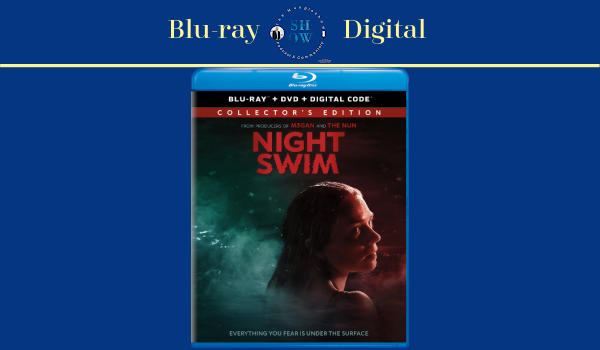
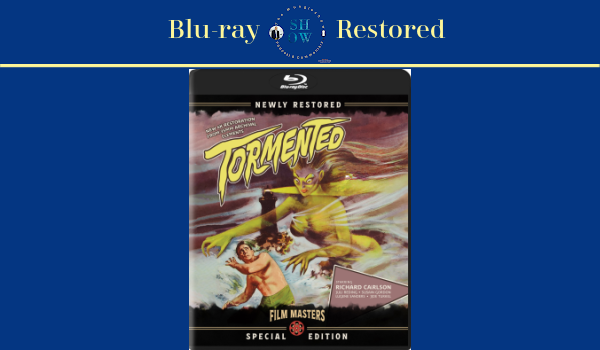
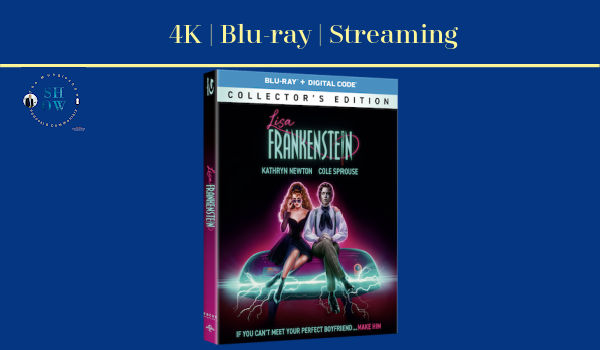
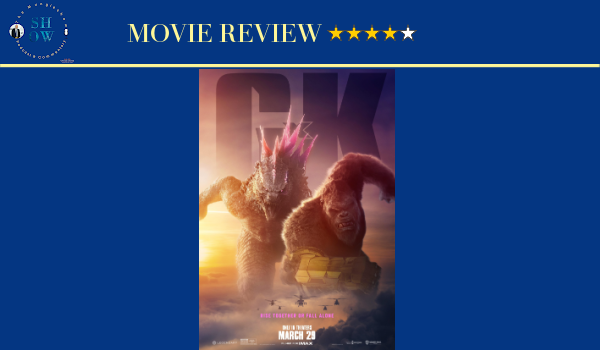
More Stories
Some Boba TEA
FRAGGLE ROCK: BACK TO THE ROCK
If you want Wonder Woman on Blu-ray raise your hand!